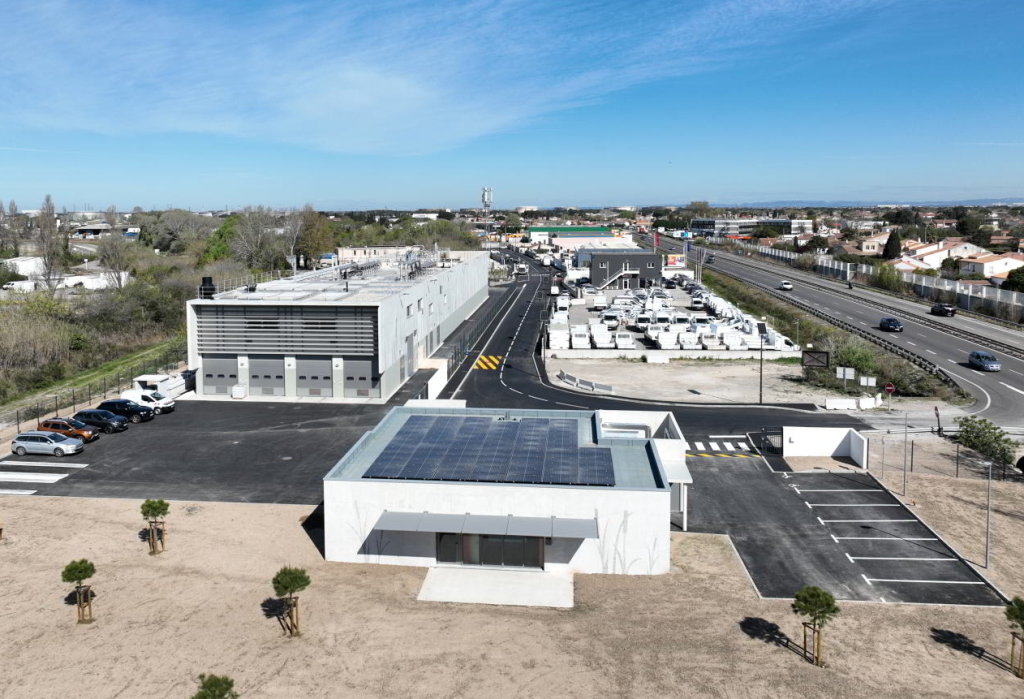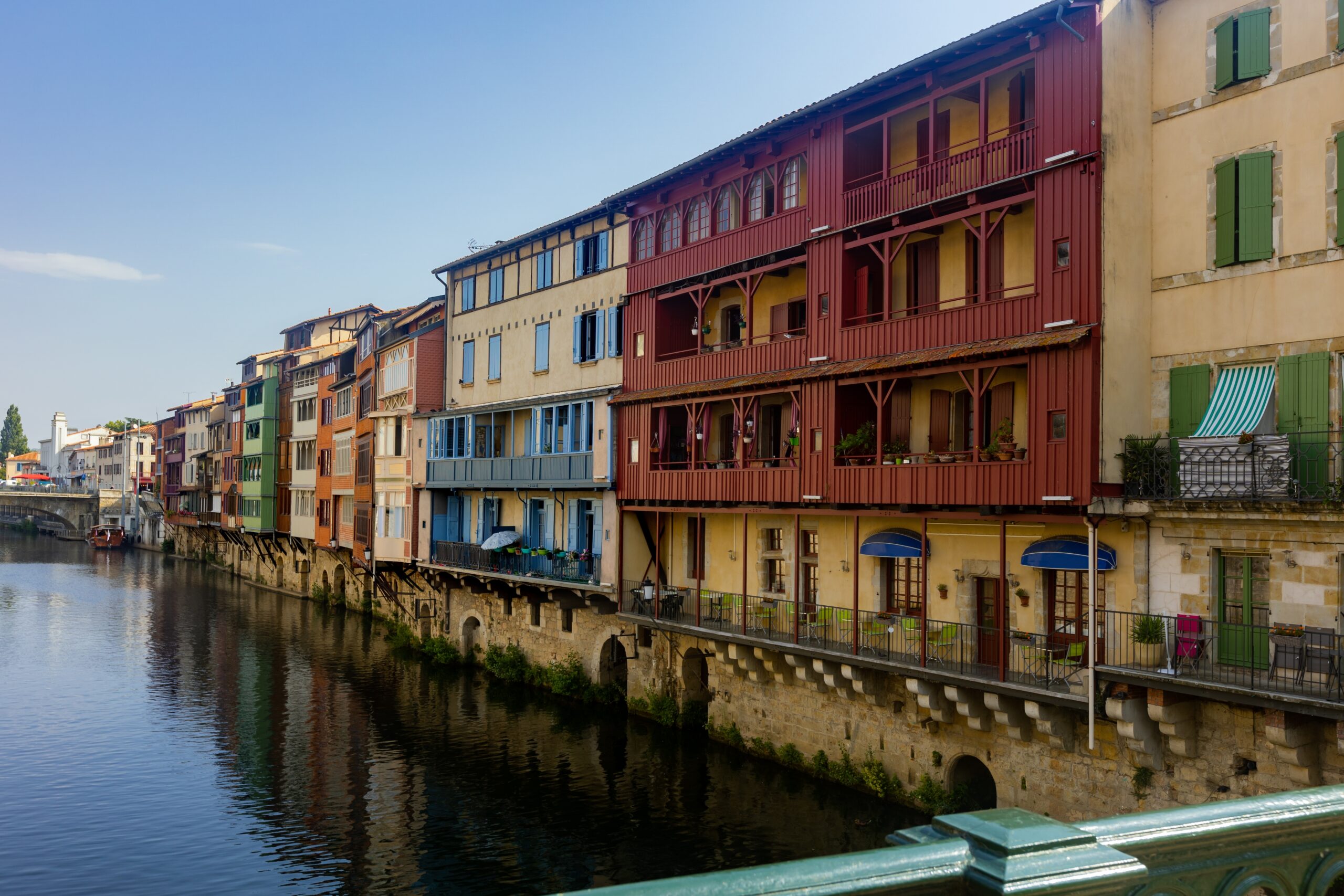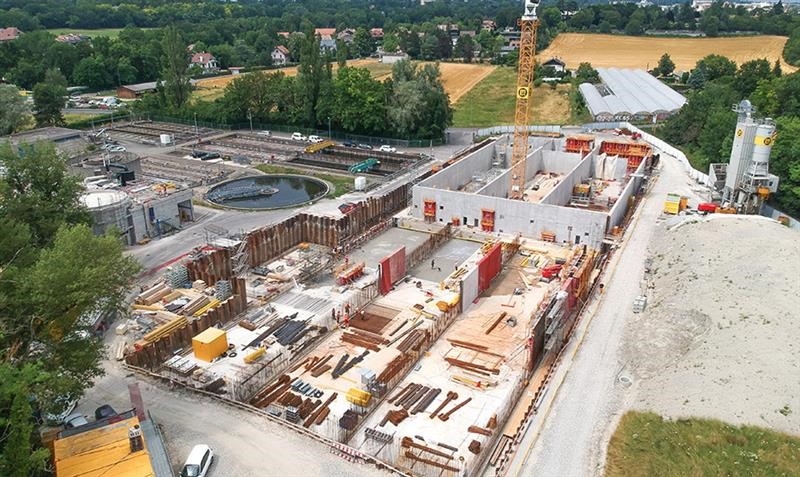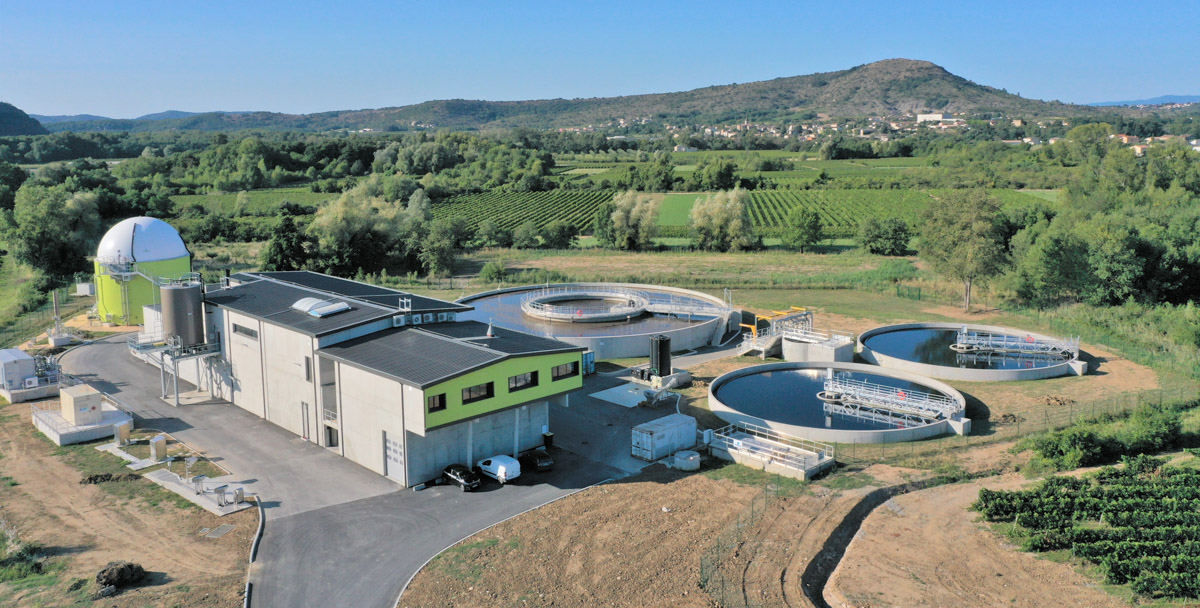- Wastewater
Fos-sur-Mer (Bouches-du-Rhône)
Fos-sur-Mer: an exemplary environmental assessment
The wastewater treatment plant in Fos-sur-Mer (Bouches-du-Rhône) is undergoing transformation to meet the challenges of tomorrow. Through the processes it implements, the new plant, with a capacity of 28,000 population equivalents, achieves ambitious objectives in terms of treatment performance and environmental compliance, a significant environmental asset for the city of Fos-sur-Mer and the development of the Aix-Marseille-Provence Metropolis.

The challenges
- Increasing the treatment capacity of the former wastewater treatment plant to reach 28,000 population equivalents
- Ensuring a level of discharge in a sensitive receiving environment.
- Preventing noise and odor nuisances from the future facility located in an urban environment
- Successfully achieve the harmonious integration of the site into its environment
Our solutions
The treatment of wastewater using an Aqua-RM® flatsheet membrane bioreactor enables the production of high-quality water discharged into the natural environment. This process, based on the separation of treated water and activated sludge through membranes immersed in a treatment reactor, provides water of “swimming pool” quality. The treated water is free from bacteria, pathogens, and suspended matter. Particularly resistant to variations in load and flow, Aqua-RM® sheet membranes are exceptionally robust and long-lasting. Treated water on the station allows the watering of a green zone planted with local species.
To avoid discharging water into the natural environment, the plant is equipped with a 1,000 m3 buffer basin for storing excess water in rainy weather.
To protect local residents from odor and noise pollution, the plant is fully enclosed and equipped with Stereau’s patented Lanodor® deodorization process, which uses no chemical inputs and has a low carbon footprint.
The Fos-sur-Mer plant generates some of its own energy thanks to photovoltaic panels. Energy savings are also achieved by regulating ventilation (Ammonair® process), recovering thermal energy from blowers to heat buildings, and using heat pumps to air-condition premises.
Benefits
- A simple, robust, and efficient treatment with high treatment performance in all weather conditions
- Ease of operation and maintenance
- A positive energy balance
- A successful architectural and landscape integration
- 5,200 hours allocated to professional integration
(36 MWh/an)




